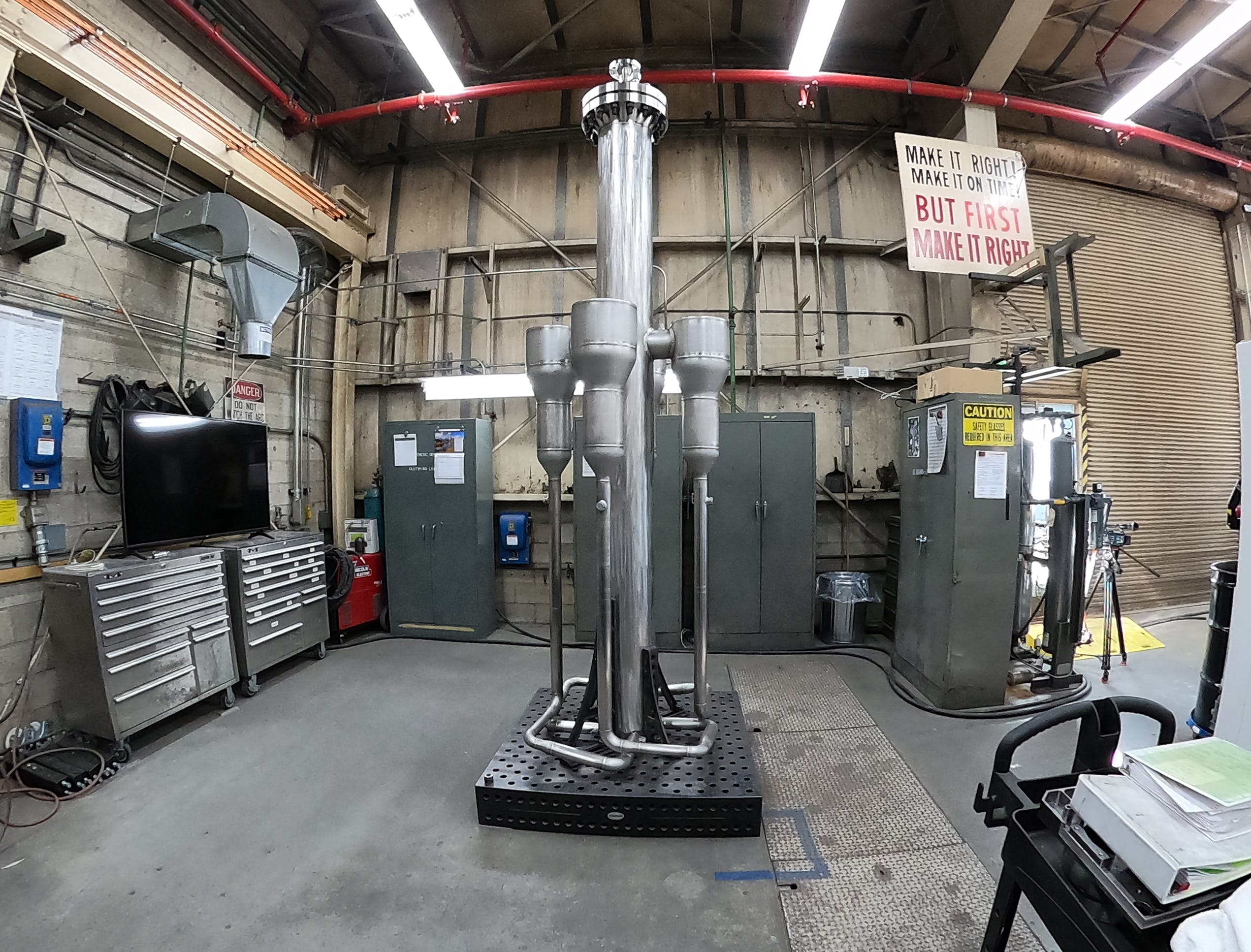Machinists at INL’s Materials and Fuels Complex (MFC) have successfully fabricated a full-scale, electrically heated prototype for the Department of Energy’s Microreactor Applications Research Validation and Evaluation (MARVEL) project in just nine months.

DOE initiated the MARVEL project last year to support the development of this nascent technology, with INL playing a central role. The MARVEL project will provide a robust experimental capability to test microreactor applications, develop regulatory approval processes for designs, evaluate systems for remote monitoring and develop autonomous control technologies. The prototype, which is not driven by fission but rather is heated by an external source of electricity, will help pave the way for the demonstration microreactor to be sited at INL’s Transient Reactor Test (TREAT) facility and connected to the world’s first nuclear microgrid.
So, what are microreactors? Broadly speaking, they’re similar to the nearly 450 nuclear power reactors currently in operation around the globe. They use nuclear fission to power electricity-generating turbines as well as heat that can be used for nonelectric applications such as hydrogen production. But unlike their larger counterparts, some of which can yield more than a gigawatt of electrical output, microreactors will operate on a much smaller scale, usually producing no more than 20 megawatts of electricity or comparable thermal output. They may be ideal for applications including powering microgrids in remote regions, supporting relief efforts in areas hit by natural disasters and driving a range of industrial processes. Microreactors could also be used in remote mining operations, many of which require between 10 and 40 megawatts of electric capacity.
Before the final version of the 100-kilowatt thermal reactor is built and installed at TREAT, the MARVEL team must verify that it will work as designed. Simulation software is a key component for predicting reactor performance, but it’s not sufficient. To confirm that the reactor will perform as expected, a prototype known as the primary-coolant apparatus test (PCAT) is needed.
“We use modelling tools to help regulators have confidence in the reactor design, but we can’t model all aspects of the flow and heat dynamics,” said Yasir Arafat, the MARVEL technical and project lead. “A demonstration is necessary for us to be certain that the final reactor will perform to a high degree of reliability and confidence level.”
If the hardware tests and simulation results are similar, the team can verify the modelling and simulation tool for use in developing the reactor’s safety case, he said.
The prototype was built in an INL machine shop, a fabrication facility responsible for a diverse portfolio of projects. The machine shop is charged with everything from producing tools and equipment for facilities to performing maintenance activities for hot cells and assembling components for radioisotope thermoelectric generators like the one powering the Perseverance rover on Mars.
Fabricated from sturdy type 316 stainless steel, the prototype is one of the largest components the machine shop has ever constructed. With a dynamic team of machinists, planners, procurement agents and quality inspectors, the machine shop is well-equipped to take on complex, constantly evolving projects.
“The design was somewhat fluid at the beginning, with design changes ongoing throughout the initial stages of the fabrication process,” said Raymond Clark, the machine shop’s fabrication manager. Having a relatively small team gave them the latitude to move quickly and respond promptly to the designers’ needs, he said.

With a project of this scale, and the requirement to build it to the same standards as a deployed reactor vessel, breaking the project down into manageable chunks was crucial. Each piece, from the main vessel body to the intermediate heat exchangers to the interface components for the four Stirling engines that will generate electricity, was meticulously crafted by the eight machinists involved in the project before being welded together. The process took nine months from start to finish, including about 500 hours of weld time.
The sodium-potassium cooled MARVEL reactor, which is set to be the first contemporary microreactor to be built and demonstrated anywhere in the world, will feature innovations in both safety and efficiency. The microreactor will utilize natural circulation for cooling, rather than pumps requiring an external power source. It’s electricity-generating Stirling engines are designed to remove decay heat continuously. It will also use control “drums”, with four surrounding the core – but only one needing to work during potential accident conditions. The control drums consist of both neutron absorbers and reflectors to precisely control the reactor.
“When you direct neutron poisons toward the core, reactivity goes down,” Arafat said. Neutron poisons, in this case boron carbide, are materials with a high capacity for neutron absorption. “During accident conditions, automatic shutdown will be initiated with the control drums rapidly reducing core reactivity,” Arafat said.
The experimental microreactor will also be used to test remote monitoring capabilities, including wireless, real-time transmission of electrical and thermal power data, in addition to temperature profiles of the entire system. Researchers will also explore and test how effectively microreactors could be used for nonelectric applications like water purification and low-grade heat production for district heating and greenhouse environments. The current plan is for the MARVEL reactor to achieve criticality by the end of 2024 and be made available to external researchers soon after.
“This project really helped put us on the map for what our machine shop is capable of, and we look forward to increasing our footprint in light of the success we had with this project,” Clark said.
MARVEL is funded through the DOE Microreactor Program. Participating organizations include Argonne National Laboratory, INL, Los Alamos National Laboratory, Walsh Engineering, Creative Engineers Inc., and Qnergy.





